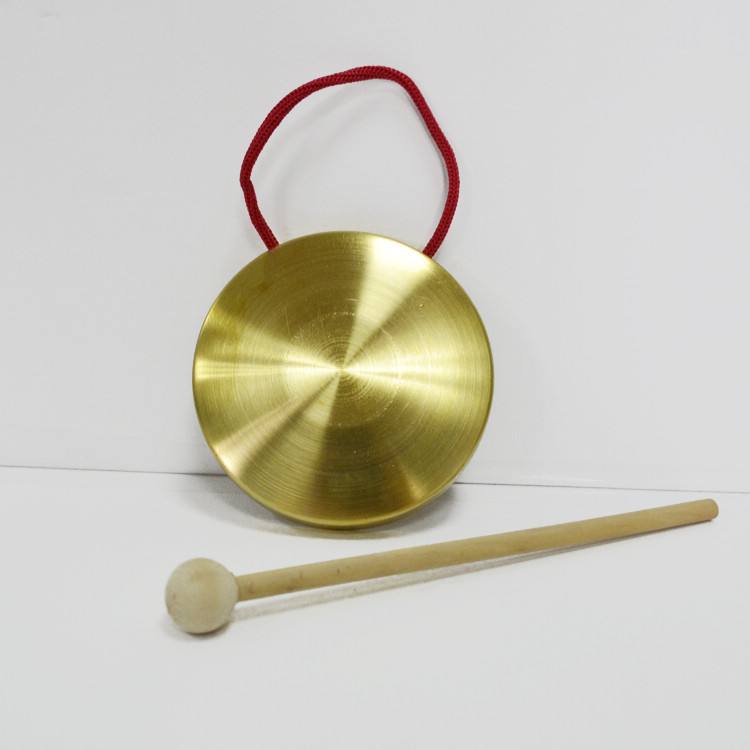xiaoluo overview
 Xiao Gong (pinyin: xiǎo luó), named for its small size. Copper, round, about 22 cm in diameter, slightly raised in the center, not tied. When playing, use your left finger to hold the inner edge of the gong, and hold a thin wood chip in your right to strike the sound. Its sound is bright and crisp. Small gongs are also called Jingxiao gongs in Peking Opera. They and big gongs strike with the rhythm of performance movements in Peking Opera, playing a role of foiling and strengthening. In gongs and drums, in addition to sometimes highlighting its timbre characteristics, it also strikes flower points, which has the effect of enriching the ensemble.
Xiao Gong (pinyin: xiǎo luó), named for its small size. Copper, round, about 22 cm in diameter, slightly raised in the center, not tied. When playing, use your left finger to hold the inner edge of the gong, and hold a thin wood chip in your right to strike the sound. Its sound is bright and crisp. Small gongs are also called Jingxiao gongs in Peking Opera. They and big gongs strike with the rhythm of performance movements in Peking Opera, playing a role of foiling and strengthening. In gongs and drums, in addition to sometimes highlighting its timbre characteristics, it also strikes flower points, which has the effect of enriching the ensemble.In the Song Dynasty, gongs were used in the folk music form "guban". In the Yuan Dynasty, in addition to the folk shrines often blaring gongs, it was also the main accompaniment instrument for Zaju. In addition to being used in court "feasts", it was also popular among the people. At that time, the manufacture and performance of gongs had reached a certain level.
With the development of opera art, gongs have played an important role in the accompaniment of Kunqu Opera in Ming and Qing Dynasties. The Chinese gong was spread to Europe from the west. In 1791, the French composer Gosec began to use the gong in his orchestral works and was the only Chinese instrument in the symphony orchestra.
Since the 20th century, gongs have been widely used in local opera, folk music, folk entertainment and festivals, and participated in the performance of various bands. In addition, it is also a tool for hawkers and monkey jugglers to solicit business along the street, replacing the selling with the unique tone of the gong, which is called "calling the head".
- Pinyin:xiǎo luó
- Classification:percussion
- material:Multipurpose copper structure
- shape:circular arc
overview of other similar instruments
- sanyanxiao overview
- Daguangxian overview
- Leiqin overview
- hahao overview
- yandundagu overview
- Han Xiaozheng overview
- Fang Xiang overview
- guanzi overview
- zhuqin (Dao Qin) overview
- zhuiqin overview
- bangzi overview
- three-stringed piano overview
- Gehu overview
- xiao overview
- xiaokonghou overview
- Konghou overview
- Sheng overview
- suona overview
- hulusi overview
- gushao overview
 渝公网安备 50010702504639号
渝公网安备 50010702504639号